TickerTape
Weekly Global Stablecoin & CBDC Update

This Week’s Stories
- U.S. Treasury’s Stablecoin Demand Prediction
- Crypto Market Cap Surges After “Crypto Week”
- Bank Al-Maghrib to Explore CBDC
- StablR Secures Kraken Investment
- Crypto-linked Shares Soar
- BoE to Shelf Digital Pound Plans?
- U.S. Presidential Digital Asset Report
- BNY Mellon and GS Collaborative Tokenized Money Market Fund
- Hong Kong to Criminalize Unlicensed Stablecoin Promotions from Aug. 1
U.S. Treasury Deputy Secretary Michael Faulkender forecasted that stablecoin demand could soar to trillions of dollars, emphasizing their rapidly growing importance in the global financial ecosystem. This projection came during a period of significant cryptocurrency market developments, including Bitcoin’s stability around $118,000 and various institutional activities. Faulkender’s comments align with growing recognition of stablecoins as crucial infrastructure for digital finance, particularly following the passage of the GENIUS Act. The statement reflects the Treasury Department’s acknowledgment of stablecoins’ potential to transform traditional payment systems and cross-border transactions. The projection comes as the current stablecoin market stands at approximately $260 billion, suggesting potential for massive expansion. Faulkender’s forecast coincided with other significant market movements, including BNB surpassing 740 USDT with a 1.98% increase and notable cryptocurrency whale activity in Ethereum markets. The Treasury official’s trillion-dollar projection highlights the department’s view that stablecoins represent a fundamental shift in how digital payments and monetary systems could operate, particularly as regulatory frameworks like the GENIUS Act provide clearer guidelines for issuance and operation.
Key Takeaways:
- U.S. Treasury Deputy Secretary Michael Faulkender projects stablecoin demand could reach trillions of dollars
- Forecast emphasizes stablecoins’ increasing importance in the global financial ecosystem
- Comments made during period of significant crypto market activity and legislative developments
- Current stablecoin market at ~$260 billion suggests potential for massive expansion
- Treasury Department recognition of stablecoins as transformative payment infrastructure
- Projection aligns with post-GENIUS Act optimism about regulated stablecoin growth
Why It Matters:
- Demonstrates high-level government recognition of stablecoins’ systemic importance in future finance
- Validates industry projections about massive growth potential in regulated stablecoin markets
- Shows Treasury Department’s strategic thinking about digital dollar infrastructure
- Indicates government support for stablecoin adoption within regulatory frameworks
- Reflects confidence in stablecoins’ role in maintaining U.S. dollar dominance globally
- Suggests policy alignment between Trump administration and stablecoin industry growth
The total market capitalization of cryptocurrency assets surged past $4 trillion for the first time, driven by momentum from the sweeping U.S. legislative push to regulate the digital asset sector. This historic milestone reflects investor confidence following the passage and signing of landmark cryptocurrency legislation, including the GENIUS Act for stablecoin regulation. The market rally demonstrates how regulatory clarity can positively impact digital asset valuations and investor sentiment. The $4 trillion threshold represents a significant psychological and economic milestone for the cryptocurrency industry, validating years of growth and institutional adoption. The surge was attributed to reduced regulatory uncertainty following the establishment of clear frameworks for stablecoin operation and digital asset oversight. Market participants viewed the legislative achievements as validation of cryptocurrency’s legitimacy and potential for mainstream financial integration. The milestone comes as various digital assets experienced significant gains, with Bitcoin maintaining levels above $118,000 and other cryptocurrencies benefiting from the positive regulatory environment. This represents the first time the total cryptocurrency market has reached such valuations, marking a new era for digital asset markets and institutional participation.
Key Takeaways:
- Total cryptocurrency market cap surged past $4 trillion for first time in history
- Milestone driven by momentum from U.S. legislative push to regulate digital assets
- Market rally reflects investor confidence following GENIUS Act passage and signing
- Demonstrates how regulatory clarity positively impacts digital asset valuations
- Represents validation of cryptocurrency’s legitimacy and mainstream potential
- Historic achievement marks new era for digital asset markets and institutional participation
Why It Matters:
- Demonstrates massive market validation following regulatory clarity achievements
- Shows correlation between legislative progress and cryptocurrency market performance
- Indicates growing institutional confidence in regulated digital asset environment
- Reflects broader acceptance of cryptocurrencies as legitimate financial instruments
- Could attract additional institutional investment given regulatory framework establishment
- Marks significant milestone in cryptocurrency’s evolution toward mainstream adoption
Morocco’s central bank governor Abdellatif Jouahri announced on July 21, 2025, that Bank Al-Maghrib is exploring the development of its own CBDC for peer-to-peer and cross-border payments. The central bank has been collaborating with the International Monetary Fund and World Bank to assess the payment system impacts of implementing a CBDC. Additionally, Morocco’s central bank, together with Egypt’s central bank and the World Bank, is exploring using the CBDC for cross-border transfers. Despite cryptocurrencies being banned in Morocco since 2017, underground usage persists. A draft law on crypto assets is currently under review by the finance ministry before entering the adoption process. The CBDC represents Morocco’s effort to modernize its payment systems while maintaining regulatory oversight over digital currency developments.
Key Takeaways:
- Morocco’s central bank actively exploring CBDC development for peer-to-peer and cross-border payments
- Collaboration with IMF, World Bank, and Egypt’s central bank on cross-border CBDC applications
- Despite 2017 crypto ban, underground cryptocurrency usage continues in Morocco
- Draft law on crypto assets currently under finance ministry review before adoption
- CBDC development aims to modernize payment systems while maintaining regulatory control
- Focus on cross-border payment efficiency and financial inclusion objectives
Why It Matters:
- Demonstrates Morocco’s strategic pivot toward digital financial infrastructure despite crypto restrictions
- Shows growing international collaboration on cross-border CBDC applications between African nations
- Reflects global trend of central banks exploring CBDCs while maintaining cautious approach to private cryptocurrencies
- Could establish Morocco as regional leader in North African digital finance innovation
- Highlights tension between embracing government-controlled digital currencies while restricting decentralized alternatives
- May influence other African countries’ approaches to CBDC development and crypto regulation
European stablecoin issuer StablR announced a strategic investment from Kraken on July 21, 2025, reinforcing their shared commitment to expanding access to compliant, secure, and globally accessible stablecoins. In just six months since launch, StablR’s euro-pegged (EURR) and dollar-pegged (USDR) stablecoins have achieved remarkable milestones: listing on over 50 exchanges including Kraken, Bitfinex, Bybit, and HTX; availability in more than 150 trading pairs; and surpassing $3 billion in transaction volume in the first six months of 2025. StablR’s founder and CEO Gijs op de Weegh emphasized that the collaboration marks a significant step in expanding stablecoin adoption across Europe, Asia, Latin America, and beyond. Mark Greenberg, Kraken’s VP of Product, highlighted stablecoins’ role in reinventing how investors and institutions interact with financial services worldwide.
Key Takeaways:
- StablR receives strategic investment from Kraken to expand compliant stablecoin access globally
- EURR and USDR stablecoins listed on 50+ exchanges with 150+ trading pairs in six months
- $3 billion transaction volume achieved in first half of 2025, reflecting growing institutional adoption
- Partnership aims to expand stablecoin adoption across Europe, Asia, and Latin America
- Demonstrates institutional validation of regulated European stablecoin alternatives to USD-dominated market
- Reinforces commitment to MiCA-compliant stablecoin development and regulatory adherence
Why It Matters:
- Shows growing institutional investment in regulated European stablecoin alternatives to USD-dominance
- Demonstrates rapid adoption of compliant stablecoins following clear regulatory frameworks like MiCA
- Reflects competitive dynamics as European firms challenge U.S. stablecoin market dominance
- Indicates strong institutional demand for euro-denominated stablecoins alongside dollar alternatives
- Validates business model of regulatory-first approach to stablecoin development and distribution
- Could accelerate development of diverse, multi-currency stablecoin ecosystem globally
Shares of cryptocurrency-linked companies surged on July 21, 2025, following ether price advances after President Trump signed the GENIUS Act into law. The legislation represents a significant achievement for cryptocurrency advocates who sought regulatory framework to enhance industry credibility. The House approved the bill 308-122 with support from nearly half of Democratic representatives and most Republicans, after Senate endorsement. Bitcoin rose approximately 1% while remaining over 3% below its record high of $123,153 reached the previous week. Deutsche Bank analysts suggested Ethereum prices increased as investors pivoted toward the second-largest cryptocurrency as a yield-generating alternative within decentralized finance, since the new law prohibits interest payments on regulated stablecoins. Companies with cryptocurrency portfolios experienced gains, including BitMine rising 5.3% and other ether-holding companies like Bit Digital, BTCS, and SharpLink Gaming seeing increases ranging from 3.1% to 12.6%.
Key Takeaways:
- Crypto-linked company stocks surged following GENIUS Act signing and ether price advances
- House passed legislation 308-122 with bipartisan support after Senate endorsement
- Bitcoin gained 1% but remained below previous week’s $123,153 record high
- Ethereum benefited from investor pivot toward yield-generating DeFi alternatives
- Companies holding cryptocurrencies experienced significant stock price gains up to 12.6%
- New law prohibits interest payments on regulated stablecoins, affecting market dynamics
Why It Matters:
- Demonstrates immediate market confidence in comprehensive stablecoin regulatory framework
- Shows correlation between legislative achievements and both crypto and traditional equity markets
- Indicates institutional validation of cryptocurrency as legitimate investment asset class
- Reflects investor sophistication in rotating between different crypto assets based on regulatory changes
- Could accelerate corporate adoption of cryptocurrency treasury strategies
- Shows spillover effects of crypto regulation into traditional financial markets
The Bank of England is privately weighing whether to pause its digital pound project amid doubts over the value of a retail CBDC, according to Bloomberg. Banking industry officials have been encouraged to fast-track payment innovations, such as tokenized deposits. These innovations could offer comparable advantages without the need to issue new currency. Though the Bank remains ready to launch a digital pound if warranted, internal research suggests diminishing returns from a state-run CBDC as stablecoins and private-sector solutions proliferate. Governor Andrew Bailey reiterated in a parliamentary hearing that, if commercial payment enhancements prove effective, there may be little justification for a new form of sterling. The Bank plans to keep the design phase open but will assess market developments before deciding whether to proceed.
Key Takeaways:
- The BoE is considering shelving its digital pound initiative due to diminishing perceived benefits.
- Senior staff are privately encouraging banks to focus on private-sector payment innovations (e.g., tokenised deposits).
- Internal research indicates global CBDC momentum is fading as stablecoins gain traction.
- Governor Andrew Bailey told MPs he’d need “a lot of convincing” on the need for a digital pound if commercial solutions succeed.
- No final decision has been made; the Bank will monitor market-led payment progress before committing to build.
Why It Matters:
- Pausing the digital pound could redirect resources toward faster, lower-cost private payment improvements.
- Demonstrates central bank agility in adapting to evolving financial-technology landscapes.
- Signals confidence in stablecoins and tokenised deposits to meet consumer and merchant needs.
- May influence other central banks’ CBDC plans amid a broader global reassessment of state-issued digital currencies.
- Affects future regulatory and innovation trajectories for UK payment systems.
The U.S. Presidential Digital Asset Task Force completed its mandated 180-day report, scheduled for public release on July 30, 2025, according to Bo Hines, Executive Director of the U.S. Presidential Digital Asset Advisory Committee. The report was mandated by President Trump’s January 23, 2025 executive order and is expected to play a crucial role in shaping future U.S. policies and regulations concerning digital assets. The comprehensive report will likely include regulatory and legislative proposals advancing policies established in the executive order, including creation of a Strategic Bitcoin Reserve. Key areas expected to be covered include evaluation of how the U.S. can create and maintain a national digital asset stockpile, potentially using cryptocurrencies seized through law enforcement activities. The report will also provide updates on federal Bitcoin holdings and highlight legislative steps Congress is taking toward codifying the Strategic Bitcoin Reserve into law.
Key Takeaways:
- Presidential Digital Asset Task Force completed 180-day report mandated by January 23 executive order
- Public release scheduled for July 30, 2025, with comprehensive policy recommendations
- Expected to include proposals for Strategic Bitcoin Reserve creation and management
- Report will address national digital asset stockpile using potentially seized cryptocurrencies
- Will provide updates on federal Bitcoin holdings and congressional legislative progress
- Anticipated to play crucial role in shaping future U.S. digital asset policies and regulations
Why It Matters:
- Represents first comprehensive federal government digital asset policy framework in U.S. history
- Could establish United States as global leader in strategic cryptocurrency reserves and holdings
- Demonstrates high-level government commitment to digital asset integration in national strategy
- May influence other countries’ approaches to cryptocurrency reserves and strategic positioning
- Shows coordination between executive branch policy development and congressional legislative initiatives
- Could accelerate institutional adoption through clear government strategic framework and guidance
The Bank of New York Mellon Corporation and Goldman Sachs announced on July 23, 2025, a collaborative initiative utilizing blockchain technology to maintain customer ownership records for select Money Market Funds. This partnership represents the first time U.S. fund managers have enabled MMF share subscriptions via BNY’s LiquidityDirect platform an value represented through mirror tokenization using Goldman Sachs’ GS DAP technology. The solution allows investors to subscribe and redeem MMF shares through BNY’s market-leading platform while creating mirror tokens utilizing Goldman Sachs’ award-winning technology platform. This collaboration marks a significant advancement in tokenized financial products, combining traditional asset management with distributed ledger technology to enhance utility and transferability of existing MMF shares.
Key Takeaways:
- First U.S. fund manager solution enabling MMF subscription via blockchain-based platforms
- Utilizes Goldman Sachs’ GS DAP technology for mirror token creation and management
- BNY’s LiquidityDirect platform provides connectivity and integration with digital asset infrastructure
- Partnership demonstrates institutional embrace of tokenized traditional financial products
- Represents significant step toward mainstream adoption of blockchain technology in asset management
- Combines traditional fund management expertise with cutting-edge distributed ledger innovation
Why It Matters:
- Demonstrates major Wall Street firms’ commitment to integrating blockchain technology with traditional finance
- Could accelerate institutional adoption of tokenized financial products across asset management industry
- Shows practical application of distributed ledger technology for enhancing existing financial services
- Reflects growing confidence in blockchain infrastructure for managing traditional investment products
- May influence other major financial institutions to develop similar tokenized fund solutions
- Represents convergence of traditional asset management with emerging digital asset technology
Starting August 1, Hong Kong’s new Stablecoin Ordinance makes it a criminal offence to offer or advertise unlicensed fiat-referenced stablecoins (FRS) to retail investors. Violators face fines up to HK$50,000 (≈ US$6,300) and up to six months’ imprisonment. The Hong Kong Monetary Authority (HKMA) issued a warning urging caution amid a “stablecoin euphoria” that has driven speculative stock and trading volume spikes. HKMA Chief Executive Eddie Yue emphasized that the regulation aims to enhance credibility and stability in the nascent sector and protect investors from fraud and excessive speculation. While around 50 license applications have been received, most lack concrete implementation roadmaps, technical expertise or risk-management plans; only a handful of issuers are expected to qualify initially.
Key Takeaways:
- From August 1, promoting unlicensed stablecoins to Hong Kong retail investors is illegal, punishable by HK$50,000 fines and six months’ jail.
- The HKMA’s public warning highlights risks of fraud and speculative hype around stablecoin announcements.
- Eddie Yue said most license applications are overly conceptual and lack viable use cases, so few will be approved.
- Hong Kong’s criminal penalties exceed those in the EU’s MiCA (no imprisonment) and the UK’s FCA enforcement (limited take-downs).
- The ordinance aims to balance fintech innovation with investor protection and market integrity.
Why It Matters:
- Establishes one of the world’s strictest frameworks for stablecoin promotions, deterring unregulated activity and scams.
- Enhances investor confidence by mandating licensing, reserve transparency and compliance controls.
- Aligns Hong Kong with global digital-asset regulation while reinforcing its reputation as a structured crypto hub.
- Protects retail investors from speculative risks and potential losses associated with unbacked stablecoins.
- Signals to industry participants that credible, well-prepared stablecoin issuers are needed to sustain long-term market development.
Powered by






